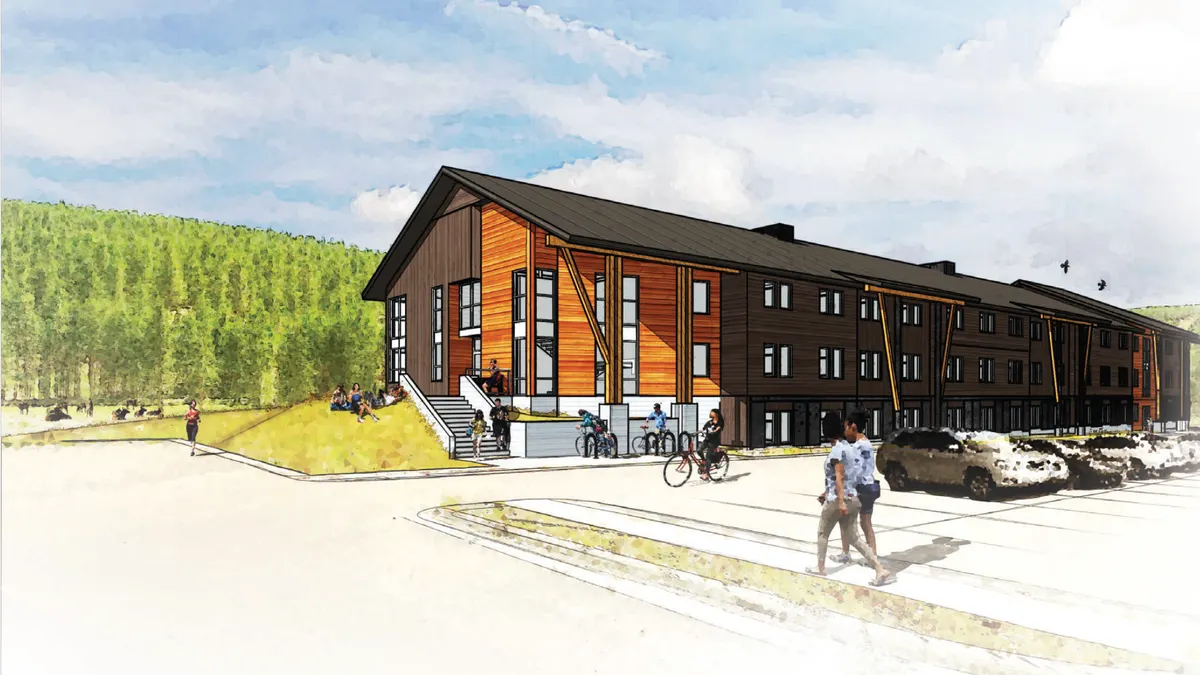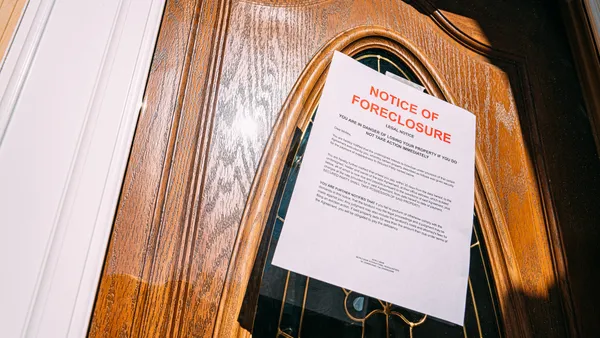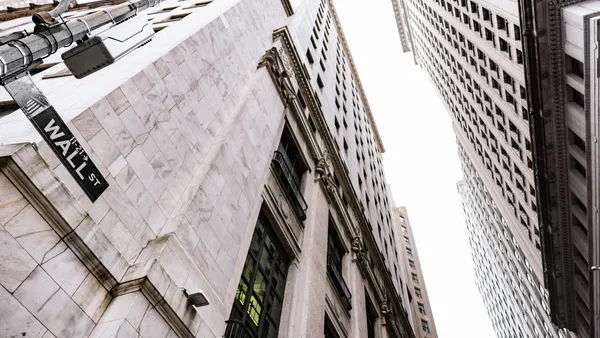Dive Brief:
- A high-profile office-to-apartment conversion — the 215,245-square-foot former BMO Harris bank tower in Phoenix — has gone into foreclosure, according to Axios Phoenix.
- Wilmington, Delaware-based lender Delphi Financial Group plans to auction the property on Nov. 21. However, the court-appointed receiver asked to delay the sale until there is a comprehensive review of the project, according to The Phoenix Business Journal.
- Maricopa, Arizona-based Camelback Owner LLC, which planned to convert the tower into a luxury apartment called One Camelback, defaulted on its $71.3 million loan in June, according to the Phoenix Business Journal.
Dive Insight:
Despite the current controversy about when the tower will be sold, Dale Phillips, founder of Phoenix-based Stellar Properties, One Camelback's development consultant and leasing management company, told Axios Phoenix the project should presumably move forward when there is a new owner.
Conversions have become more popular since 2020, when U.S. office vacancies spiked after COVID-19. Office vacancies reached a 30-year high of 18.2% in the second quarter of 2023, according to the White House.
In July, the number of adaptive reuse projects in the U.S. multifamily construction pipeline had grown to 122,000 units. In 2022, it was 77,000 units, according to RentCafe’s Adaptive Reuse Report.
Potentially highlighting the challenges with conversions, adaptive reuse deliveries have not followed the same trend. A total of 10,092 converted apartments hit the market in 2022, down from 11,422 in 2021 and 13,530 in 2020, according to RentCafe.
Overcoming challenges
However, that number could grow after the Biden administration in October threw its support behind efforts to turn empty commercial buildings into housing, announcing new federal resources to support commercial-to-residential conversion projects.
New financing, technical assistance and guidance for states, localities, transit agencies and developers are among the new resources. The U.S. General Services Administration will also expand efforts to sell empty federal buildings that could be repurposed into housing.
Still, there are structural challenges to overcome before converting many office buildings to residential uses, according to Jonathan Bennett, president of New York City–based AmTrust RE.
“Offices are designed very differently than residential buildings,” Bennett told Multifamily Dive. “They’re designed with larger floor plates that try to cram more workers in during the day. And only the executives get windows, even though that’s changing a little bit today.”
But in residential buildings, every apartment needs to have windows. “So it doesn’t work on these massive floor plates,” Bennett said. “You end up with the interior of the four plates being dead weight and not usable.”
Click here to sign up to receive multifamily and apartment news like this article in your inbox every weekday.









